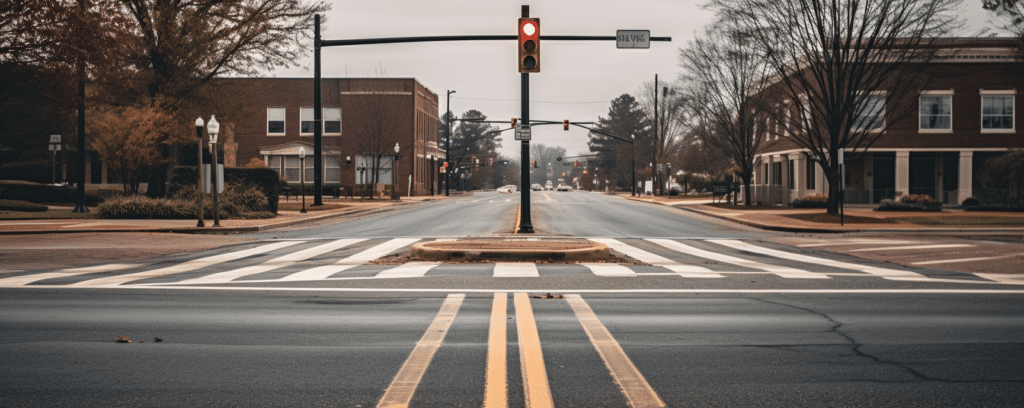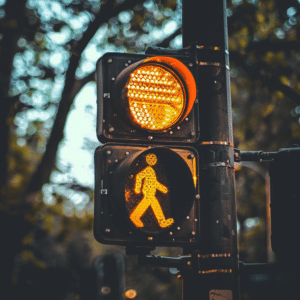Enhance Road Safety: Top Pedestrian Crossing Sign Options for Busy Streets
Last updated Thursday, April 11th, 2024

When you see a pedestrian crossing sign, do you know what it tells you beyond the obvious? These signs are pivotal for road safety, designed to caution drivers of potential areas where pedestrians may cross, especially on busy streets. In this article, we delve into the various pedestrian crossing sign options, their construction, adherence to safety regulations, and innovative technologies that are making crossings safer. From material choice to installation and design elements, learn what makes for effective pedestrian signage.
Key Takeaways
- Pedestrian crossing signs, which include high-visibility beacons like RRFBs, play a vital role in alerting drivers to slow down or stop for pedestrians in high traffic areas, especially school zones and urban centers.
- Pedestrian crossing signs are made using durable materials like high intensity reflective aluminum and are designed to meet strict Department of Transportation visibility and durability standards, such as those detailed in the MUTCD.
- Advancements in pedestrian signage, such as Connected Vehicle technologies and illumination improvements, aim to enhance road user safety by improving situational awareness and communication between all road users, including during night-time or low visibility conditions.
Get Your FREE Case Review Today
Contact us today and we will help you get the compensation that you deserve.
or Send Us Your Case DetailsGet Your FREE Case Review Today
Contact us today and we will help you get the compensation that you deserve.
or Send Us Your Case DetailsUnderstanding Pedestrian Crossing Signs
Pedestrian crossing signs, including school crossing signs, serve as crucial warning systems, alerting drivers to potential areas where pedestrians may suddenly enter the roadway. They provide an early heads-up to drivers approaching high pedestrian traffic areas, prompting a reduction in speed or a full stop if necessary. These signs are not randomly placed; they are strategically positioned in locations with high pedestrian movement like urban centers, school zones, and densely populated areas.
The presence of these signs on busy roads signals drivers to decrease speed and be watchful for pedestrian activity, thereby playing a significant role in enhancing safety. Of particular note is the adoption of rectangular rapid flashing beacons (RRFBs), which when used alongside pedestrian warning signs, has led to a notable improvement in driver yielding rates at marked crosswalks.
High-Quality Materials for Maximum Visibility
Pedestrian crossing signs are typically made from durable materials like engineer grade or material type high intensity reflective aluminum, ensuring longevity sometimes beyond a decade. The sign 80 mil aluminum material plays a critical role in its durability and suitability for various environmental conditions, contributing to its longevity.
Reflective materials, like the authorized 3M Engineer Grade film used for these grade reflective sign 80 mil, meet Department of Transportation requirements, ensuring compliance while enhancing visibility. Additionally, x 24 material type engineer grade reflective aluminum provides a sturdy base for the signs, and lamination over the graphics offers an extra layer of protection, safeguarding the sign from:
- UV rays
- water
- chemicals
- abrasion
- facilitating graffiti removal.
These signs are also designed for easy installation, featuring rounded corners, burr-free edges, and pre-punched holes compatible with a variety of mounting surfaces.
Ensuring Compliance with Regulations

- Shape
- Color
- Messaging
- Placement
Pedestrian crosswalk signs must:
- Feature the phrase ‘state law’ prominently
- Use the standard rectangular shape
- Display the appropriate symbols and colors such as yellow or fluorescent green-yellow with a black border on a white background
- Have reflectivity and durability for visibility and longevity
- Meet ASTM standards such as Type III and Type IV for different levels of performance.
The maximum height for pedestrian crosswalk signs is set at 4 feet from the top of the sign to the ground, and they must be placed in a manner that does not obstruct pedestrian pathways, typically on the centerline or median. Additionally, advance stop or yield lines are safety measures that can be installed to increase visibility of crosswalks and reduce the risk of ‘multiple-threat’ collisions.
Installation Best Practices
When installing pedestrian crossing signs, it is important to consider their design and post. They should be designed to bend and recover from vehicle impacts, returning to an upright position, reducing the likelihood of being knocked down permanently and lessening potential harm from collisions.
Correct placement of in-street pedestrian crossing signs is crucial; they must be highly visible to drivers while not obstructing pedestrian movement or access to the crosswalk. Remember, the long-term success of pedestrian crossing signs heavily relies on the initial ease of their installation and the simplicity of ongoing maintenance, influencing both effectiveness and costs.
Case Studies: Success Stories of Enhanced Street Safety
Evidence-based improvement is always more compelling, and pedestrian crossing signs are no exception. Overhead signs and flashing beacons, for example, significantly improved pedestrian safety for students in schools on wide or high-speed streets.
In Las Vegas, pedestrian crossing flags at crosswalks increased driver yielding behavior, according to an observational study. In busy areas, gateways or reflective signs were particularly effective, leading to safer crossing experiences for pedestrians. These case studies underline the potential of well-placed and well-designed pedestrian crossing signs in enhancing road safety.
Innovations in Pedestrian Signage
In our rapidly evolving world, pedestrian signage is not being left behind. Connected Vehicle (CV) technology is being piloted to enhance road user safety through warnings and advisories designed to prevent pedestrian collisions. Vehicle-to-everything (V2X) technology also facilitates safety warnings communication between equipped motor vehicles and pedestrians, increasing situational awareness and helping to prevent accidents.
Advancements in technology have led to the rise of connected systems that can alert vehicles and vulnerable road users to each other’s presence, enhancing overall safety. Well-lit crosswalks with nearby signs alerting drivers to the presence of pedestrians significantly improve night-time safety. The installation of overhead lights, in-road flashing lights, and bollard lights at crosswalks has correlated with reduced pedestrian fatalities and severe injuries.
Flashing beacon signs utilize lights to draw attention in conditions of low visibility or high traffic, significantly enhancing pedestrian safety. The Every Day Counts 7 Nighttime Visibility for Safety initiative focuses on bettering visibility for vulnerable road users, particularly during night-time or low visibility conditions. It is mandatory that crosswalk signs be made retro-reflective or illuminated for consistent visibility, adhering to necessary safety regulations.
Pilot sites across the United States are currently testing new technologies and their interactions with existing infrastructure to improve safety measures for vulnerable road users, including motorists.
Design Elements That Matter
Beyond their functionality, the graphic design elements of pedestrian crossing signs significantly impact their effectiveness. These signs typically feature a high-color contrast by combining black lettering on a yellow background, a pairing known for its high visibility. To ensure widespread recognition, crossing signs commonly incorporate a universally recognized pedestrian image as a symbol, making the use of images essential in their design.
The discernibility of a sign is influenced by factors such as font size along with the chosen color contrast. There is a variety of pedestrian crossing signs, including those with supplemental arrows and different shapes like diamonds and STOP sign forms, each designed to address specific roadway conditions. Enhanced message clarity can be achieved by adding supplemental text, such as ‘Watch for Pedestrians’, to guide drivers’ actions near crossings.
Protecting Vulnerable Road Users
Protecting vulnerable road users, including efforts to protect students, is at the heart of pedestrian crossing sign design and installation. The Federal Highway Administration promotes the Safe System Approach seeking zero deaths on roads, with an emphasis on safeguarding vulnerable road users. The U.S. Department of Transportation’s National Roadway Safety Strategy underscores the goal that no number of deaths or serious injuries on roadways is acceptable.
The recent Bipartisan Infrastructure Law allocates substantial funding for addressing roadway safety concerns, prioritizing the protection of vulnerable road users. Designing crosswalks to reduce crossing distances and match sidewalk ramps is essential for assisting those with visual and physical disabilities. Collaboration between government agencies, stakeholder groups, and the private sector is vital for effectively testing and implementing new safety technologies like Vehicle-to-Everything (V2X) communication.
Frequently Asked Questions
What does the pedestrian crossing sign mean?
The pedestrian crossing sign is a common traffic sign that warns vehicles of pedestrians in the area, commonly found in urban and suburban areas. Be cautious and yield to pedestrians when you see this sign.
What are the differences between the pedestrian and school crossing signs?
The main difference between the pedestrian and school crossing signs is that the school crossing sign is used primarily where small children may be crossing the street. Both signs are used to warn motorists of pedestrians in or near the roadway.
What is a pedestrian crossing used for?
Pedestrian crossings are used to assist pedestrians in safely crossing roads, improving traffic flow and maintaining order. They also provide facilities for disabled pedestrians.
What is the crosswalk sign called?
The crosswalk sign is formally called a pedestrian crossing sign and is commonly found in urban and suburban areas to warn drivers of pedestrians in the area. It may be accompanied by additional regulatory signage or pedestrian signals that indicate when it is safe to cross.
What materials are used in the construction of pedestrian crossing signs?
Pedestrian crossing signs are typically made from durable materials like engineer grade or high-intensity grade reflective aluminum, providing visibility and longevity for pedestrian safety.






